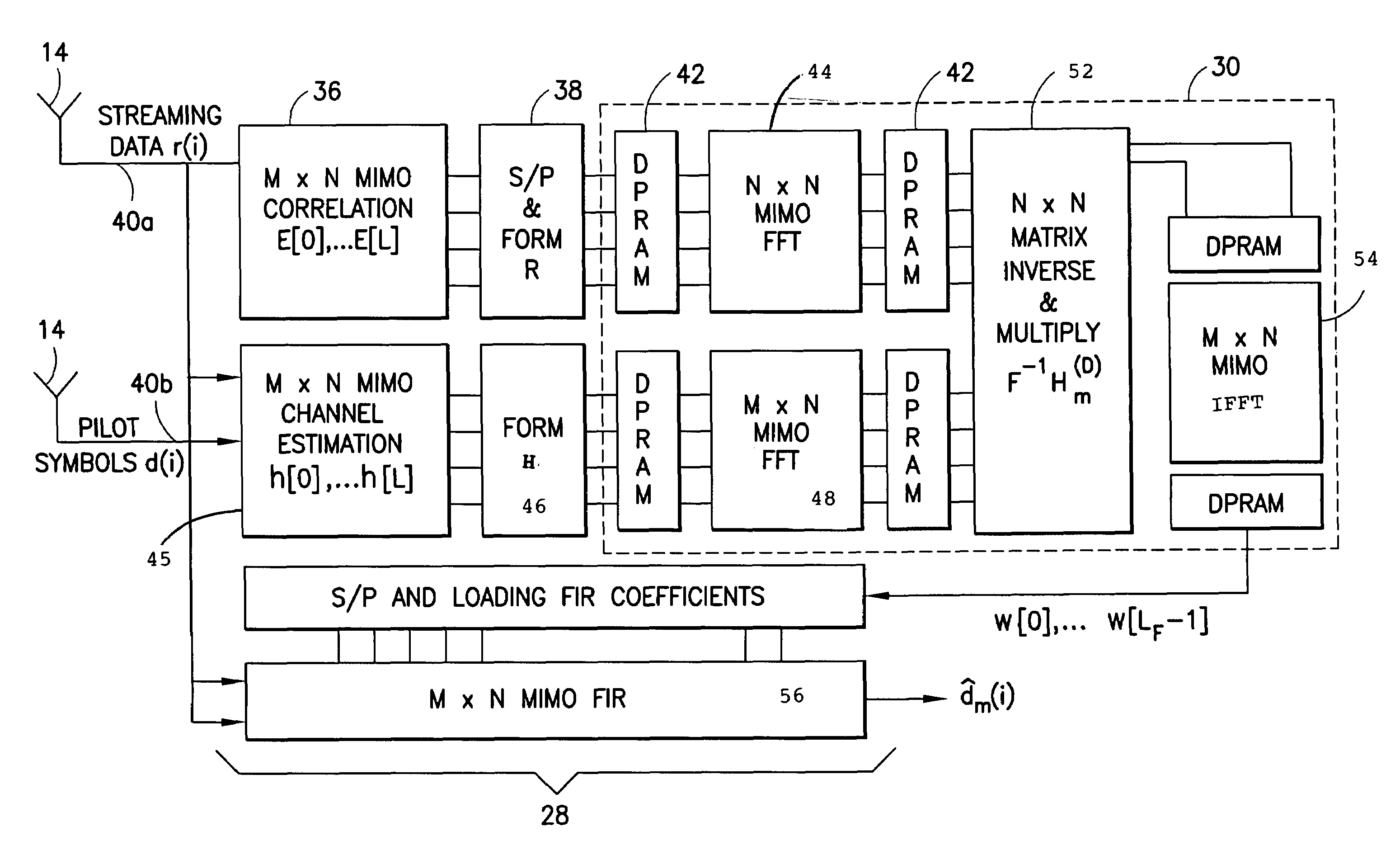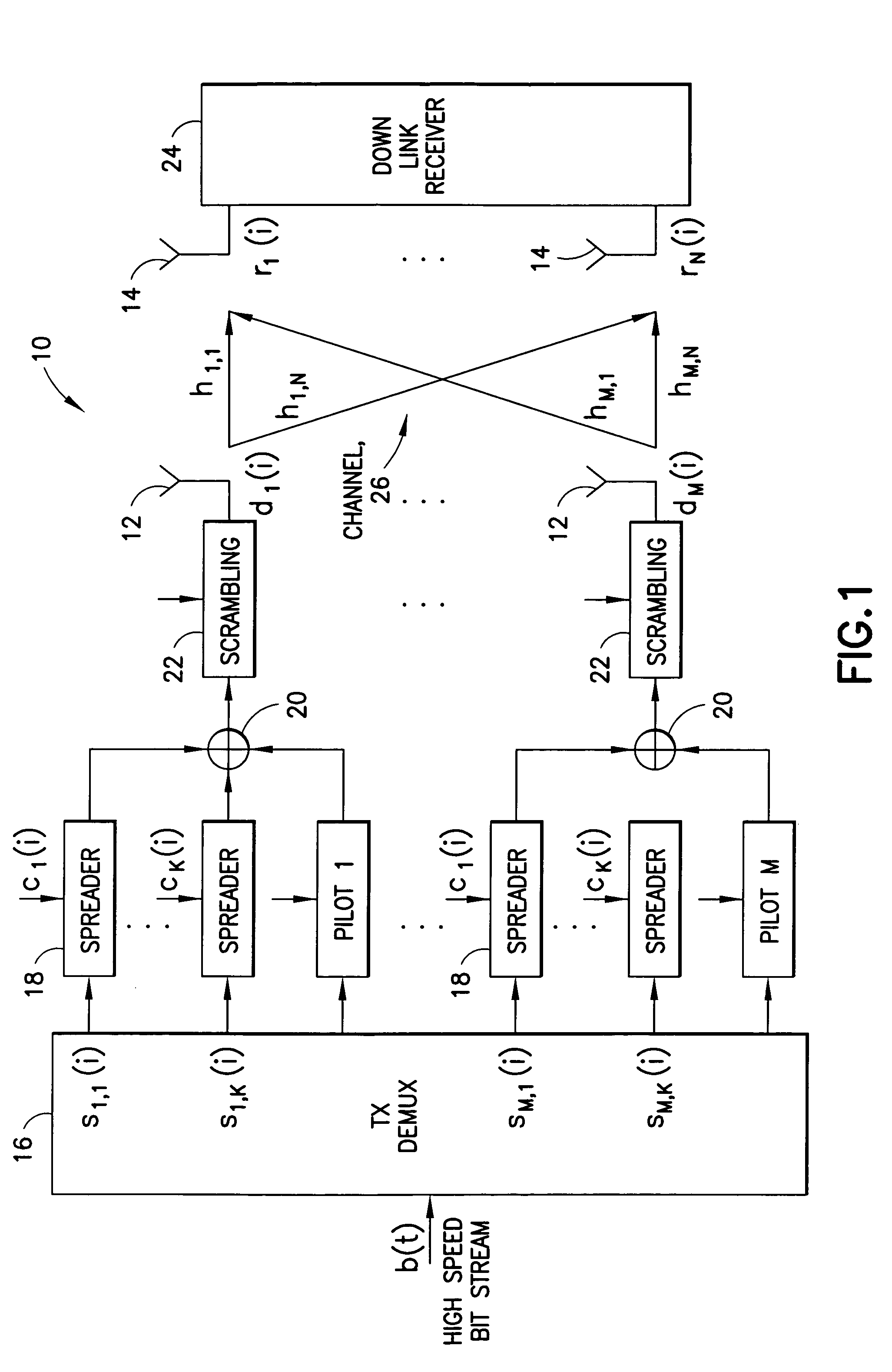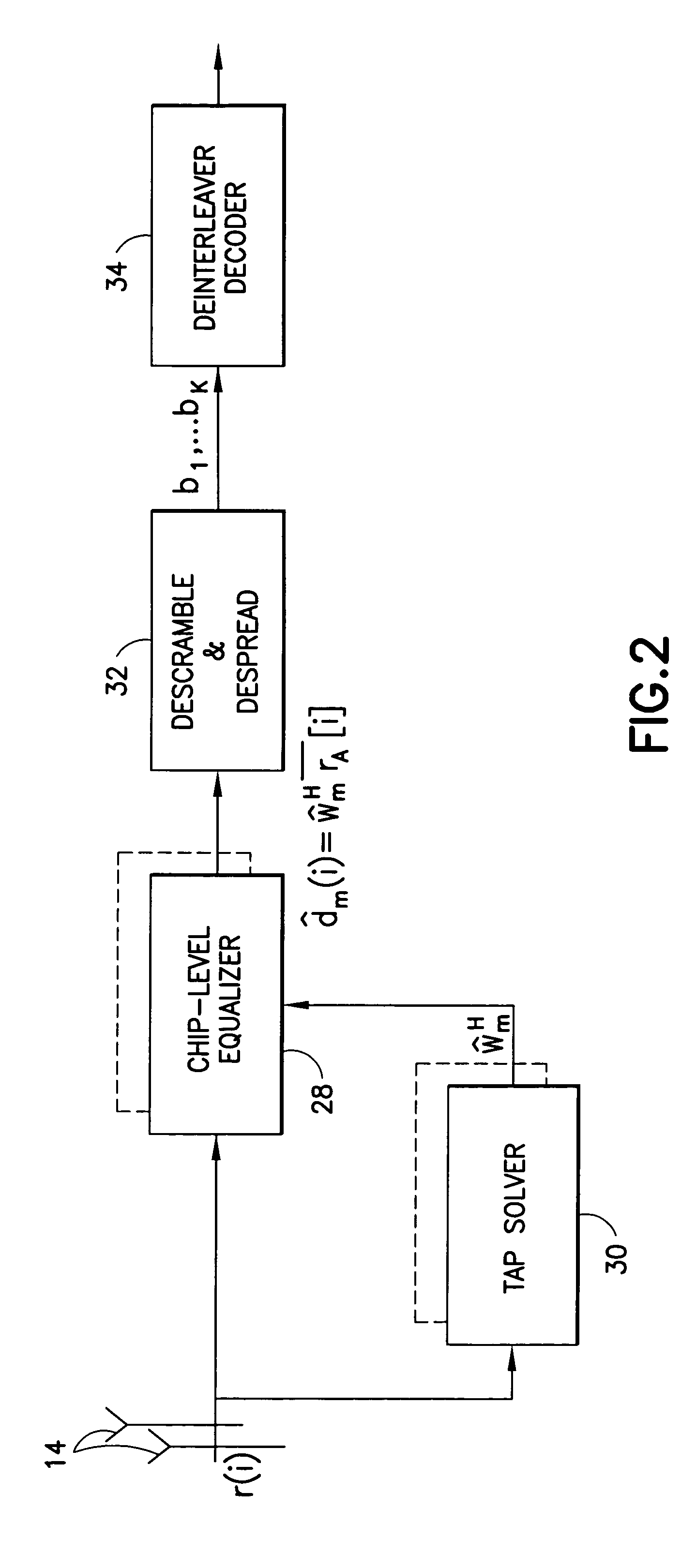Reduced parallel and pipelined high-order MIMO LMMSE receiver architecture
a receiver architecture and high-order technology, applied in the field of receivers, can solve the problems of low reliability of the algorithm of option (i), unstable algorithms, and high hardware implementation costs, and achieve the effect of reducing the number and complexity of conventional ffts design modules
- Summary
- Abstract
- Description
- Claims
- Application Information
AI Technical Summary
Benefits of technology
Problems solved by technology
Method used
Image
Examples
Embodiment Construction
[0027]The following acronyms are used herein:[0028]LMMSE: Linear Minimum Mean Squared Error;[0029]CDMA: Code-Division Multiple Access;[0030]SIMO: Single Input Multiple Output;[0031]MIMO: Multiple Input Multiple Output;[0032]FPGA: Field Programmable Gate Array;[0033]VLSI: Very Large Scale Integrated circuit;[0034]ASIC: Application Specific Integrated Circuit;[0035]RTL: Register Transfer Layer;[0036]DSP: Digital Signal Processing;[0037]FFT: Fast Fourier Transform
[0038]As used herein, the term CDMA refers generically to a spread spectrum communication system unless specifically stated otherwise (e.g., CDMA2000). The operators [ ]T and [ ]* indicate transpose, and the operator [ ]H indicates a Hermitian operation as known in the art. As an overview, the present invention is a reduced complexity FFT-based linear equalizer and further includes a complete parallel VLSI architecture for a proposed MIMO receiver. To further reduce the complexity, Hermitian optimization is disclosed that util...
PUM
 Login to View More
Login to View More Abstract
Description
Claims
Application Information
 Login to View More
Login to View More - R&D
- Intellectual Property
- Life Sciences
- Materials
- Tech Scout
- Unparalleled Data Quality
- Higher Quality Content
- 60% Fewer Hallucinations
Browse by: Latest US Patents, China's latest patents, Technical Efficacy Thesaurus, Application Domain, Technology Topic, Popular Technical Reports.
© 2025 PatSnap. All rights reserved.Legal|Privacy policy|Modern Slavery Act Transparency Statement|Sitemap|About US| Contact US: help@patsnap.com



